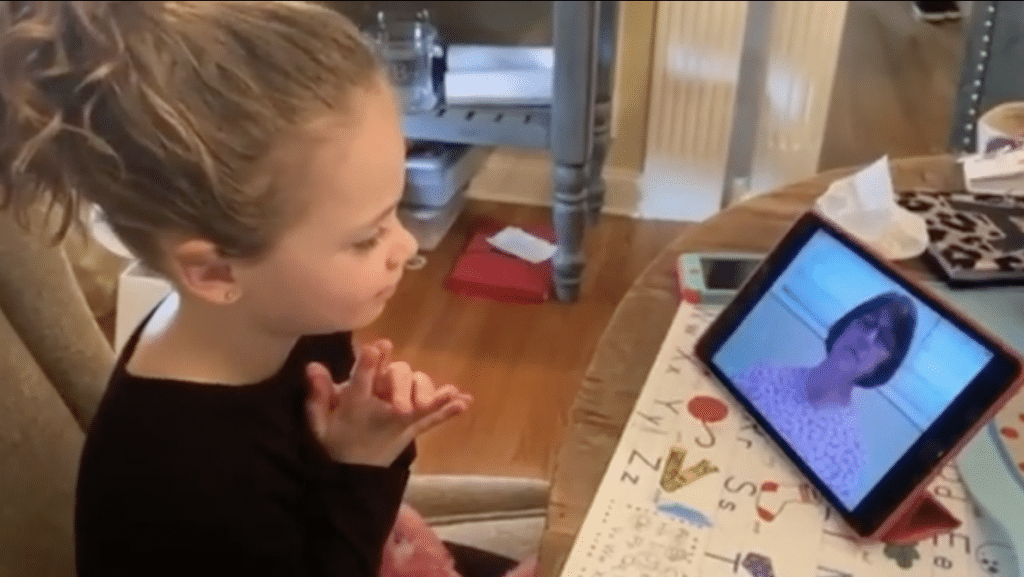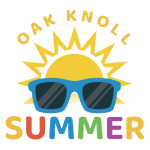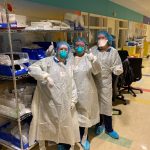Balance is Key to Oak Knoll School’s Distance Learning Plan
 As the global COVID-19 pandemic swiftly began to infiltrate our region in early March, Oak Knoll School, like others around the state, turned to an emergency distance learning model for the first time in the school’s 95-year history.
As the global COVID-19 pandemic swiftly began to infiltrate our region in early March, Oak Knoll School, like others around the state, turned to an emergency distance learning model for the first time in the school’s 95-year history.
As the school quickly prepared to ensure continuity of learning for students, teachers and administrators knew that the success of the program would hinge on balancing a rigorous academic experience while supporting the social-emotional needs of the students and their families who are struggling to maintain a sense of normalcy in an anything-but-normal world.
“When we moved to distance learning, we knew that balance would be the key — balance for parents, balance for children and balance for our teachers who have their own families at home as well,” said Oak Knoll Head of School Timothy J. Saburn, who worked with both Lower and Upper School administrators to mobilize the school’s plan to go remote on March 23, 2020. “That means we set out to create a schedule for virtual learning that was up to our standards as educators but also flexible enough to accommodate many different types of families who have their own unique needs. Some families have multiple children who are all struggling to get online at the same time or have a child who needs their parent’s help while that parent may need to be on a conference call.”
Now in its third week of distance learning, Oak Knoll continues to adhere to its academic standards using live class meetings, pre-recorded teacher lessons, online extra help sessions and various virtual tools. At the same time, the school continues to design learning by acknowledging the different needs and appropriate workload for different ages and grades, maintaining a focus on faith life and supporting the social-emotional needs of their students.
Oak Knoll’s Lower School Division Head Christine Spies said that patience and flexibility are needed during this unprecedented time of learning and that the faculty are paying special attention to the needs of students in each grade level from kindergarten through sixth grade.
“In our first week of distance learning, we started with integrated live homerooms to connect remotely for the first time with our students,” said Spies. “Teachers facilitated conversations and connections and classes engaged in fun meetings together, so that in week two we were ready to begin remote instruction via live instruction, teacher videos, and the fully integrated use of Seesaw and Google Classroom to organize daily lessons.”
The Lower School has also established an optional Google Morning Meeting, where Mrs. Spies leads students in a daily prayer, the Pledge of Allegiance, a quote of the day from Holy Child Founder Cornelia Connelly, Joke of the Day, and a surprise highlight, which could include a read-aloud, a video, exercise time, and more. Students are then encouraged to find their own balance of independent work, live lessons and to check in with their teachers on Google Meet for more one-on-one assistance.
“We are sensitive to what our students are going through emotionally at this time and homeroom teachers plan live homerooms and designate time within live lessons to continue to connect with their students and to help them to connect with each other in a fun way,” said Spies. “We don’t have a one-size-fits-all mentality.”
Kim Miele, parent of first and second graders, said she appreciates Oak Knoll’s care and flexible school day, and that the live classes take a lot of pressure off her and her husband, both of whom are working from home.
“The kids feel a lot more relaxed learning from their teachers, who are professionals, rather than the two of us,” said Miele. “Many parents realize Oak Knoll is putting in a tremendous amount of work in continuing the learning process for the kids and getting creative with how to keep the kids engaged.”
The older students in the Upper School are engaged, as well. The school follows the same eight-day cycle that the students were accustomed to while school was in session on campus. Students check in with their classes each period and they then move on to a live lesson or a solo assignment depending on the day.
“The fact that Oak Knoll recognizes the mental health piece helps to lower the stress,” said Peggy Farrell, an Oak Knoll parent of four children in grades 4,7,10 and 11. “Ultimately, this leads to more learning and has helped us to keep more positive attitudes. The kids are seeing their parents, teachers and peers stepping up to do their jobs, and seeing that we are all trying to do our best.”
Faculty in the Upper School use a variety of digital tools to develop lessons that work for their discipline and unit of study. Their lessons may range from a secure, password-protected live video conference to a posted assignment. Online tools that teachers may be using include, but are not limited to: Office 365; Google Docs, Google Sheets and Google Slides; Google Hangout; Zoom, Screen-o-matic; Flipgrid; Voice Thread; Kahoot; Padlet; EdPuzzle; and NearPod.
“We are actually learning in so many different ways right now,” said Farrell. “Because we are all home at mealtimes and have more time together, I’m finding that we are having more discussions about what they are learning,” she said.
The school even mails devices to its families who have broken technology at home so there is no disruption to distance learning.
Jennifer Landis, Upper School Division Head, said the older 7-12 grades are adapting to a remote combination of synchronous and asynchronous learning. “Synchronous learning occurs when a student’s teacher holds a live, interactive lesson. Asynchronous learning occurs when an assignment or activity is posted, and students can complete them on a flexible time schedule.”
Landis said this model maintains a sense of community while also allowing for some adaptability for students and their families.
“Since many teachers are also parents, they will need to have some flexibility in scheduling when they are able to hold live instructional sessions in order to meet the needs of their students and their families,” she said.
As of now, Oak Knoll’s campus remains closed until Governor Murphy reopens schools in the state and the students continue to adapt to their new normal of going to school remotely.
“We are very lucky to be at a school like Oak Knoll,” said Miele. “The teachers are dedicated to keeping their students on track with creative, engaging assignments and challenging work. My kids love ‘coming to school’ each day.”






